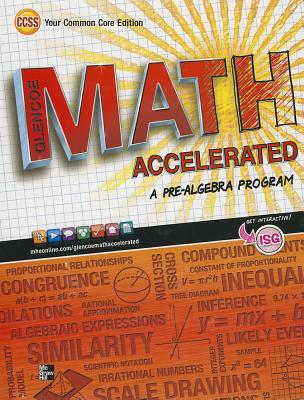
Concept explainers
The advantages of tree diagram over fundamental counting principle when finding probability.
Explanation of Solution
The fundamental counting principle states that if an event has m possible outcomes and another independent event has n possible outcomes, then there are m×n possible outcomes for the two events together.
A tree diagram on the other hand, is a visual display of all possible outcomes of compound events.
Contrary to fundamental counting principle where only analytical methods are applied to get the final answer, a tree diagram is an excellent way to visually introduce the possible outcomes to students which shows how each combination is found by following the “branches” of the tree diagram. Since visual representations are easier to understand, a tree diagram is hence more useful than the fundamental counting principle when finding possible outcomes in probability.
Chapter 10 Solutions
Glencoe Math Accelerated, Student Edition
Additional Math Textbook Solutions
Pre-Algebra Student Edition
A Problem Solving Approach To Mathematics For Elementary School Teachers (13th Edition)
Thinking Mathematically (6th Edition)
Elementary Statistics (13th Edition)
Elementary Statistics: Picturing the World (7th Edition)
- Pls help asap pls.arrow_forwardPls help asap pls.arrow_forward9. Consider the function y = 2e¯*. Determine the equation of the tangent(s) to the curve that pass through the point P(2, 0). Your final answer must be expressed in standard form as per other tests. Negative exponents and/or fractions must not appear in your final answer. For full marks please draw an accurate sketch to support your solution.arrow_forward
 Calculus: Early TranscendentalsCalculusISBN:9781285741550Author:James StewartPublisher:Cengage Learning
Calculus: Early TranscendentalsCalculusISBN:9781285741550Author:James StewartPublisher:Cengage Learning Thomas' Calculus (14th Edition)CalculusISBN:9780134438986Author:Joel R. Hass, Christopher E. Heil, Maurice D. WeirPublisher:PEARSON
Thomas' Calculus (14th Edition)CalculusISBN:9780134438986Author:Joel R. Hass, Christopher E. Heil, Maurice D. WeirPublisher:PEARSON Calculus: Early Transcendentals (3rd Edition)CalculusISBN:9780134763644Author:William L. Briggs, Lyle Cochran, Bernard Gillett, Eric SchulzPublisher:PEARSON
Calculus: Early Transcendentals (3rd Edition)CalculusISBN:9780134763644Author:William L. Briggs, Lyle Cochran, Bernard Gillett, Eric SchulzPublisher:PEARSON Calculus: Early TranscendentalsCalculusISBN:9781319050740Author:Jon Rogawski, Colin Adams, Robert FranzosaPublisher:W. H. Freeman
Calculus: Early TranscendentalsCalculusISBN:9781319050740Author:Jon Rogawski, Colin Adams, Robert FranzosaPublisher:W. H. Freeman
 Calculus: Early Transcendental FunctionsCalculusISBN:9781337552516Author:Ron Larson, Bruce H. EdwardsPublisher:Cengage Learning
Calculus: Early Transcendental FunctionsCalculusISBN:9781337552516Author:Ron Larson, Bruce H. EdwardsPublisher:Cengage Learning





